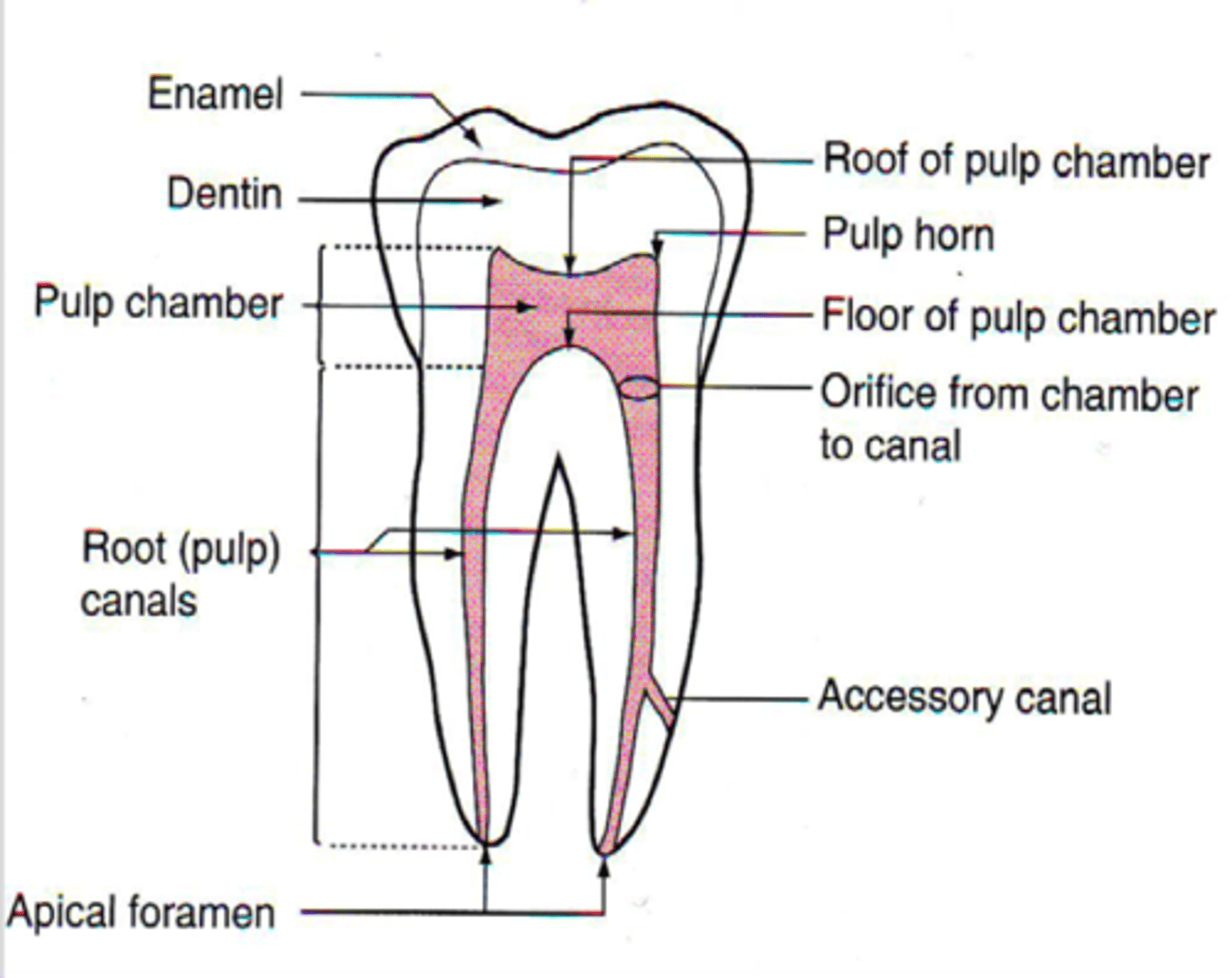Mandibular Incisors (objectives + highlighted + quiz)
1/34
There's no tags or description
Looks like no tags are added yet.
Name | Mastery | Learn | Test | Matching | Spaced |
|---|
No study sessions yet.
35 Terms
4 functions of all incisors:
-cutting/shearing during food mastication
-articulate speech
-support lips (esthetics)
-guide mandible during movement
Age of eruption for tooth mandibular central incisor
6-7 years
Age of eruption for tooth mandibular lateral incisor
7-8 years
3 common characteristics of the anatomy of the mandibular incisors:
1. barely noticeable cingula
2. the incisal edge is lingual to root axis
3. continuous convexity on facial
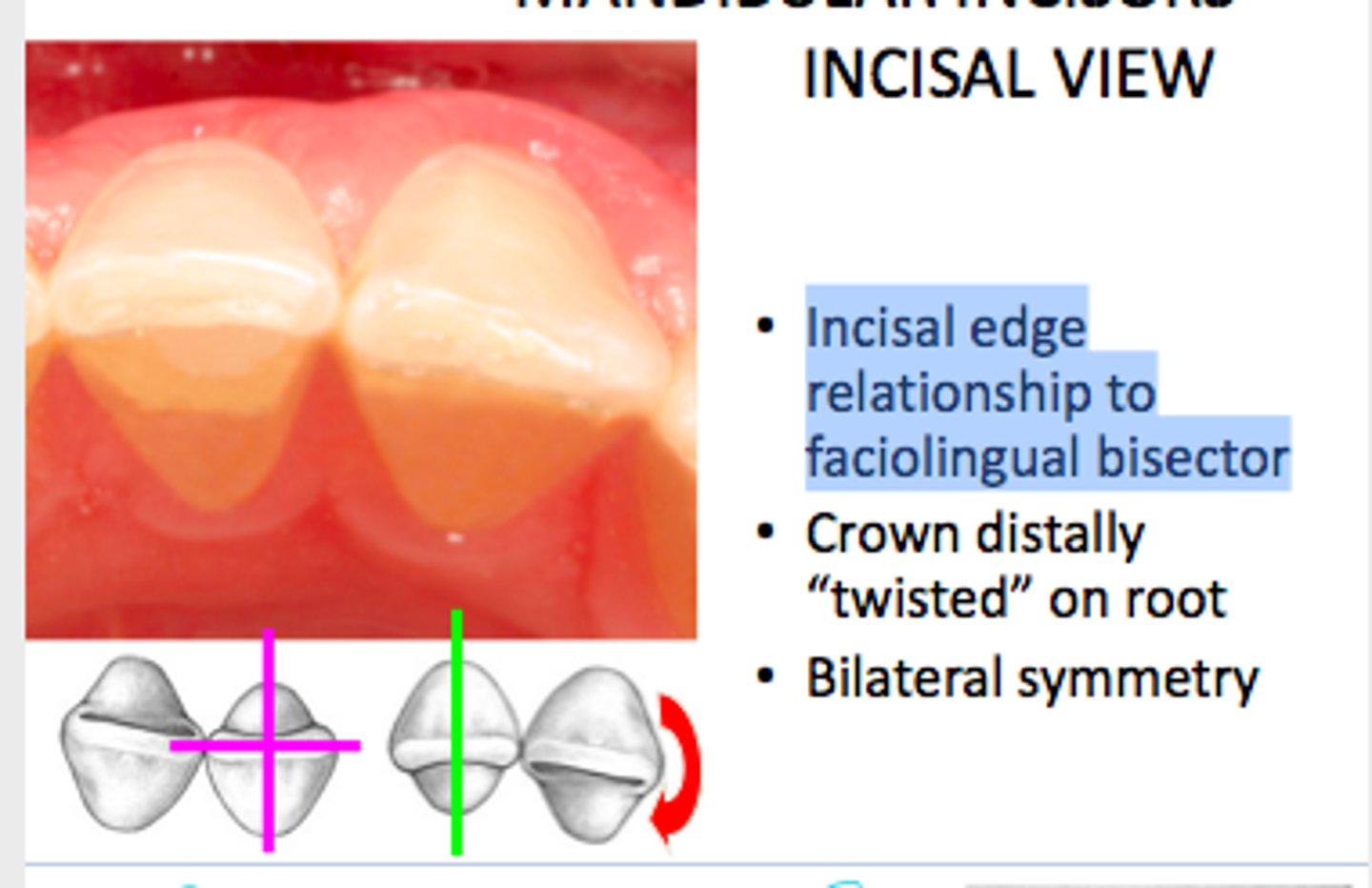
How many canals is most common for the mandibular central incisor?
1
How many canals is most common for the mandibular lateral incisor?
1
What tooth is considered to be the smallest tooth in the mouth?
Mandibular central incisor
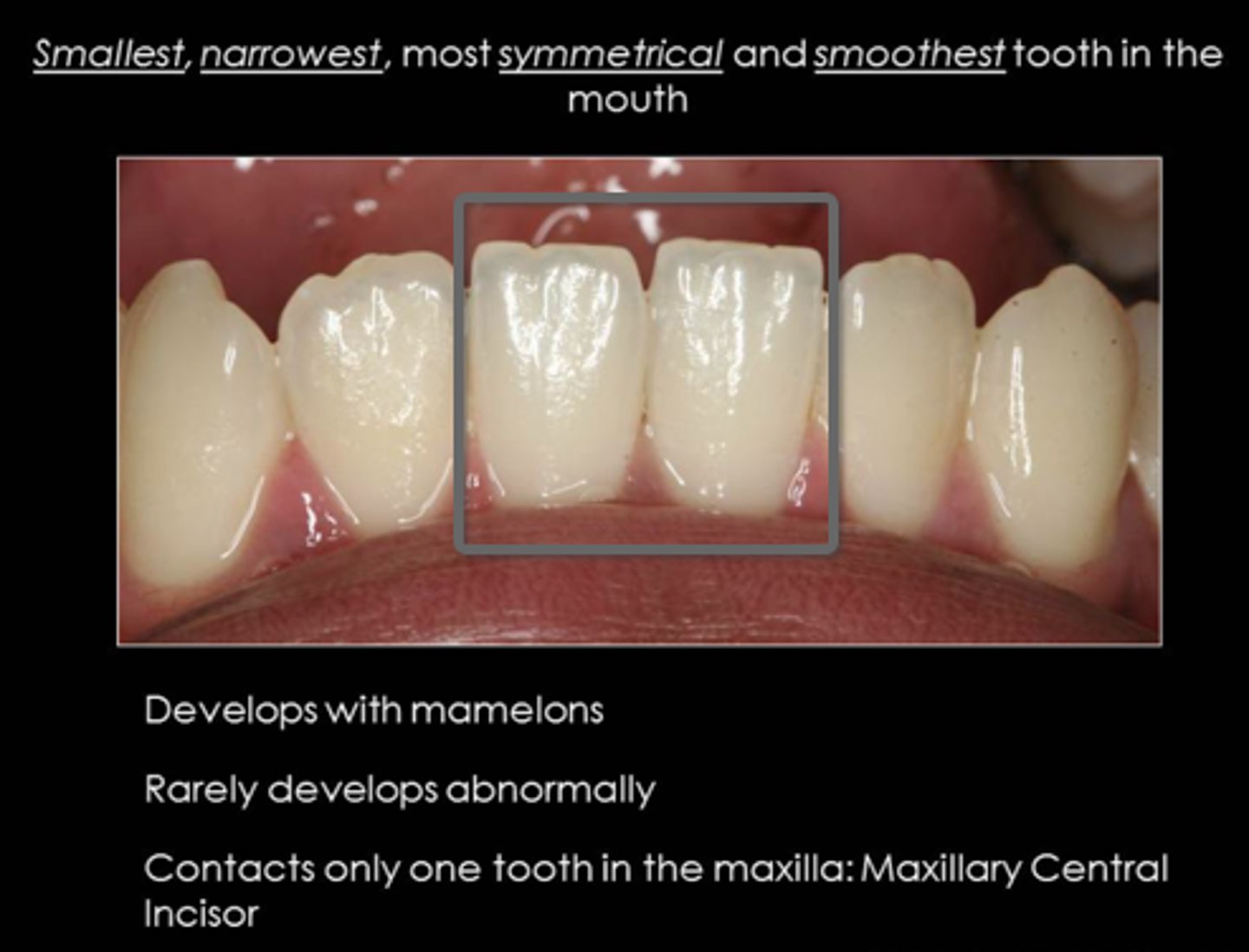
Which teeth have the most proximoincisal angels?
#25, 24
(mandibular central incisors)
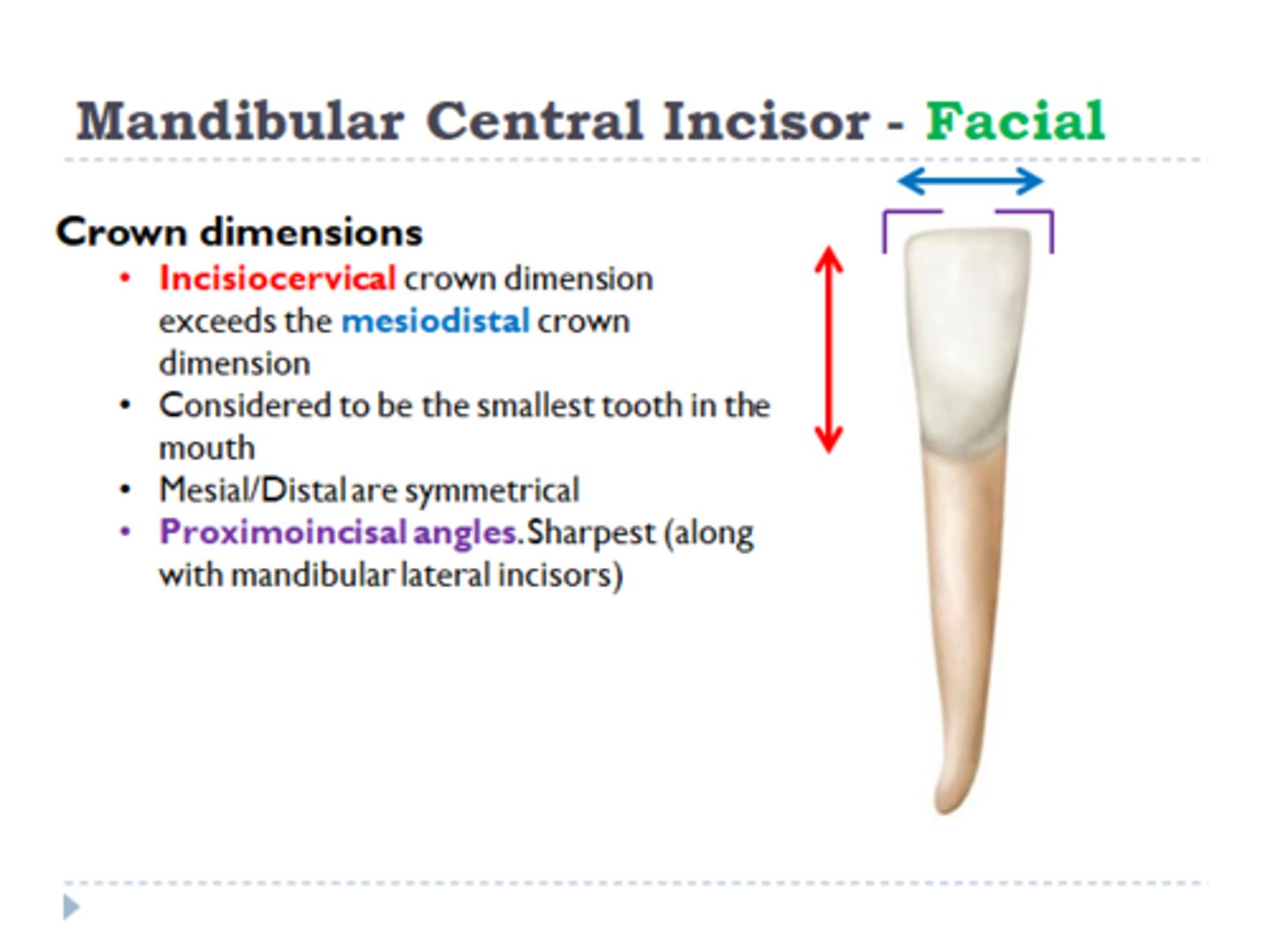
Describe the incisal edge of the mandibular central incisor from the facial view.
straight and close to being right angles
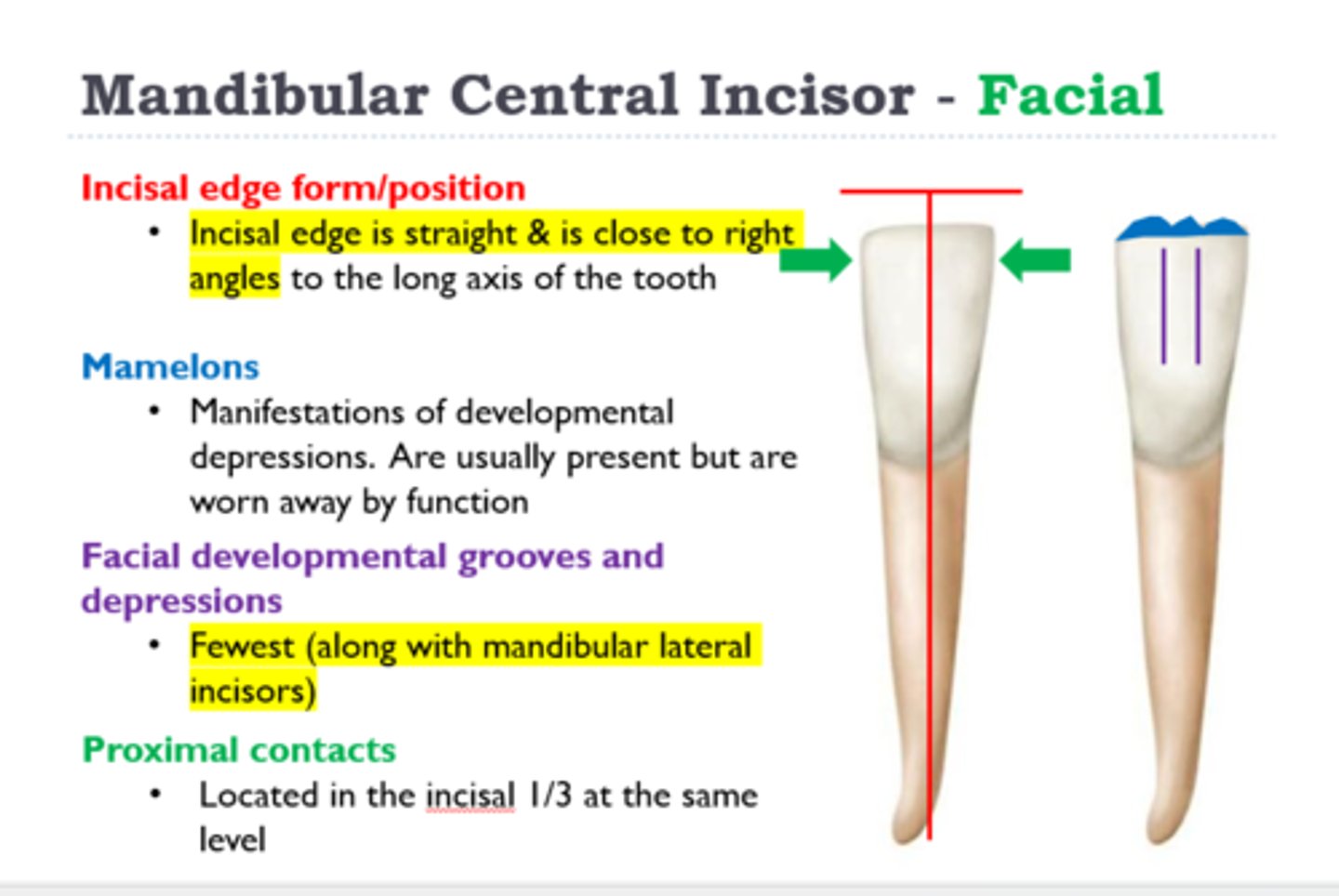
Describe the facial developmental grooves and depressions of the mandibular incisors.
Very few (fewest of all teeth)
Location of the proximal contact points of tooth #25 and #24 from the facial view.
incisal 1/3 (red arrows in picture)
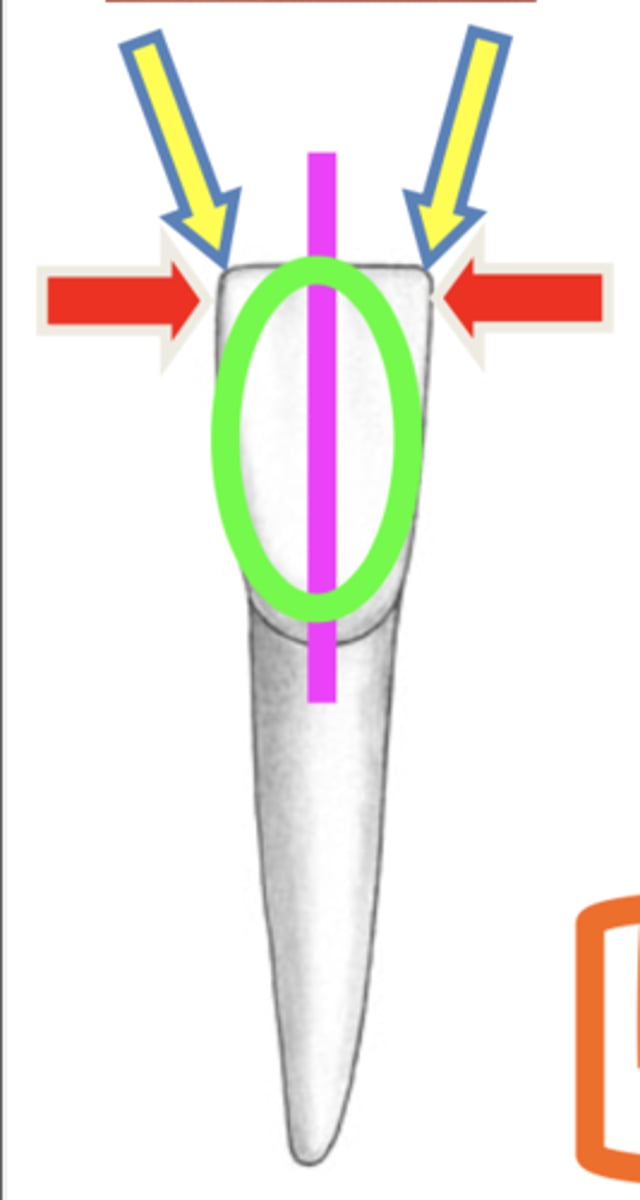
Describe the lingual surface of the mandibular incisors.
-smoothest
-very small if present: grooves, pits, ridges
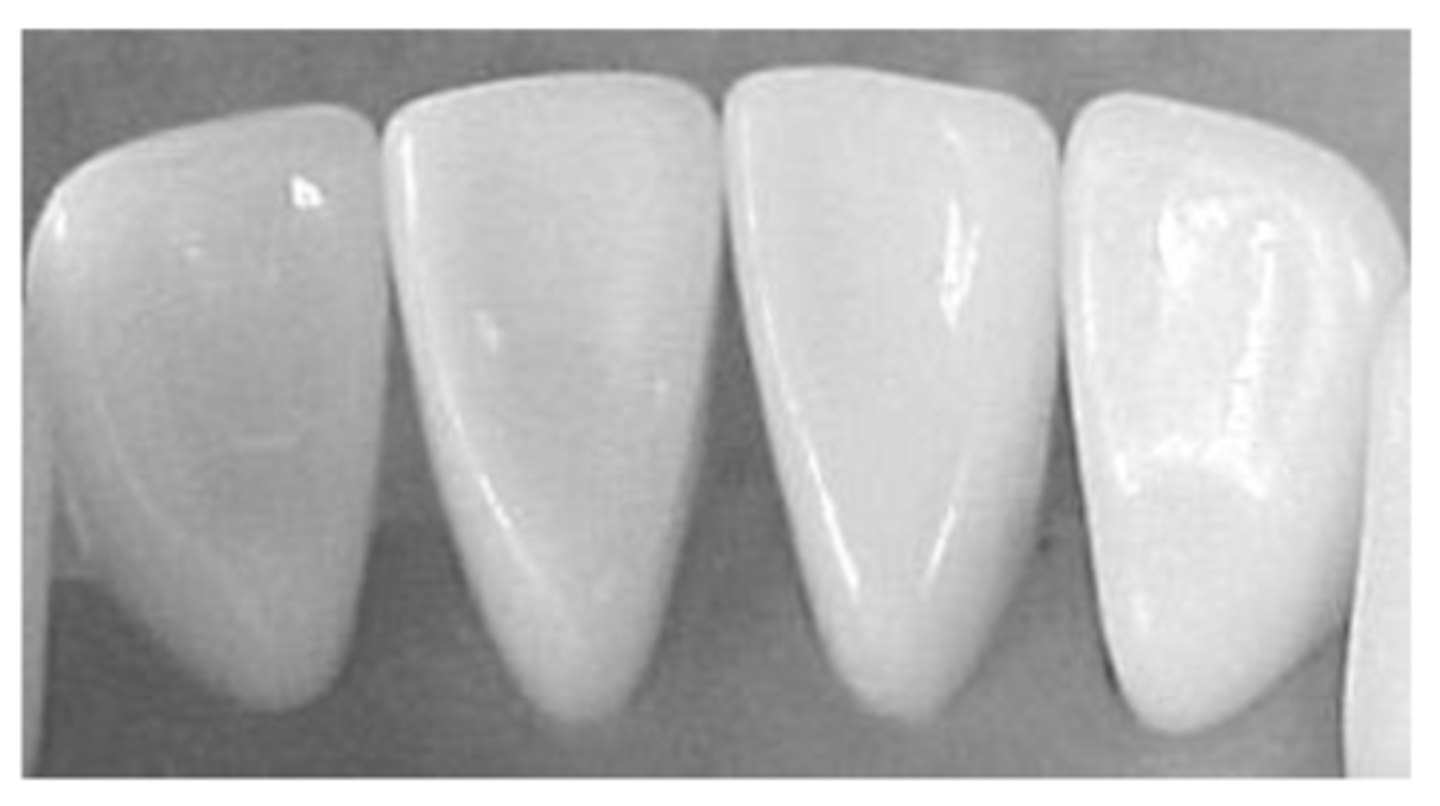
What characteristic from the lingual view can be used to differentiate between mandibular and maxillary incisors?
Smooth lingual surface
Note: Maxillary incisors have VERY defined M & D ridges, mandibular incisors do not
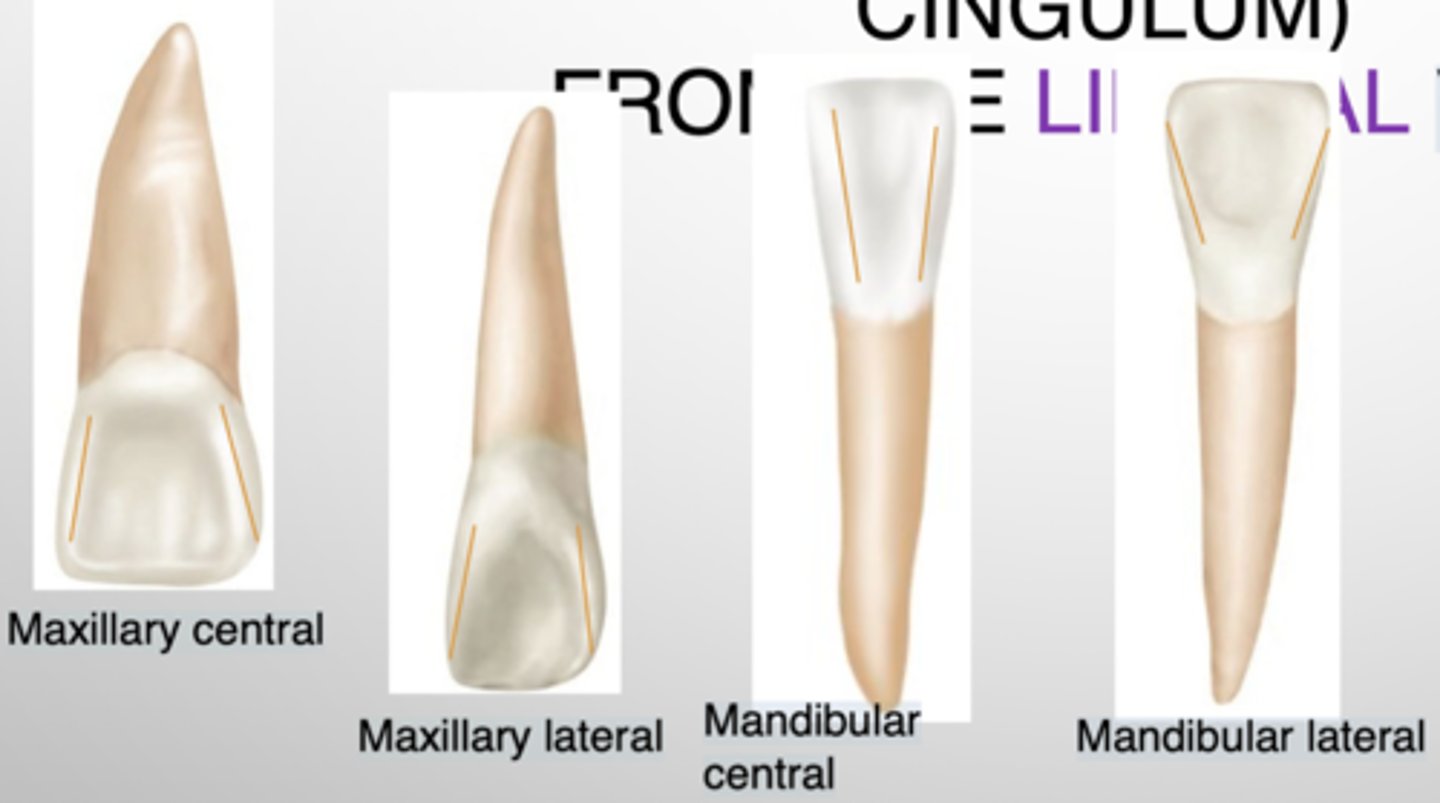
From the incisal view, the mandibular central incisor has the largest dimensions in which direction?
faciolingual
(Remember: maxillary central incisors are the opposite - larger mesiodistally)
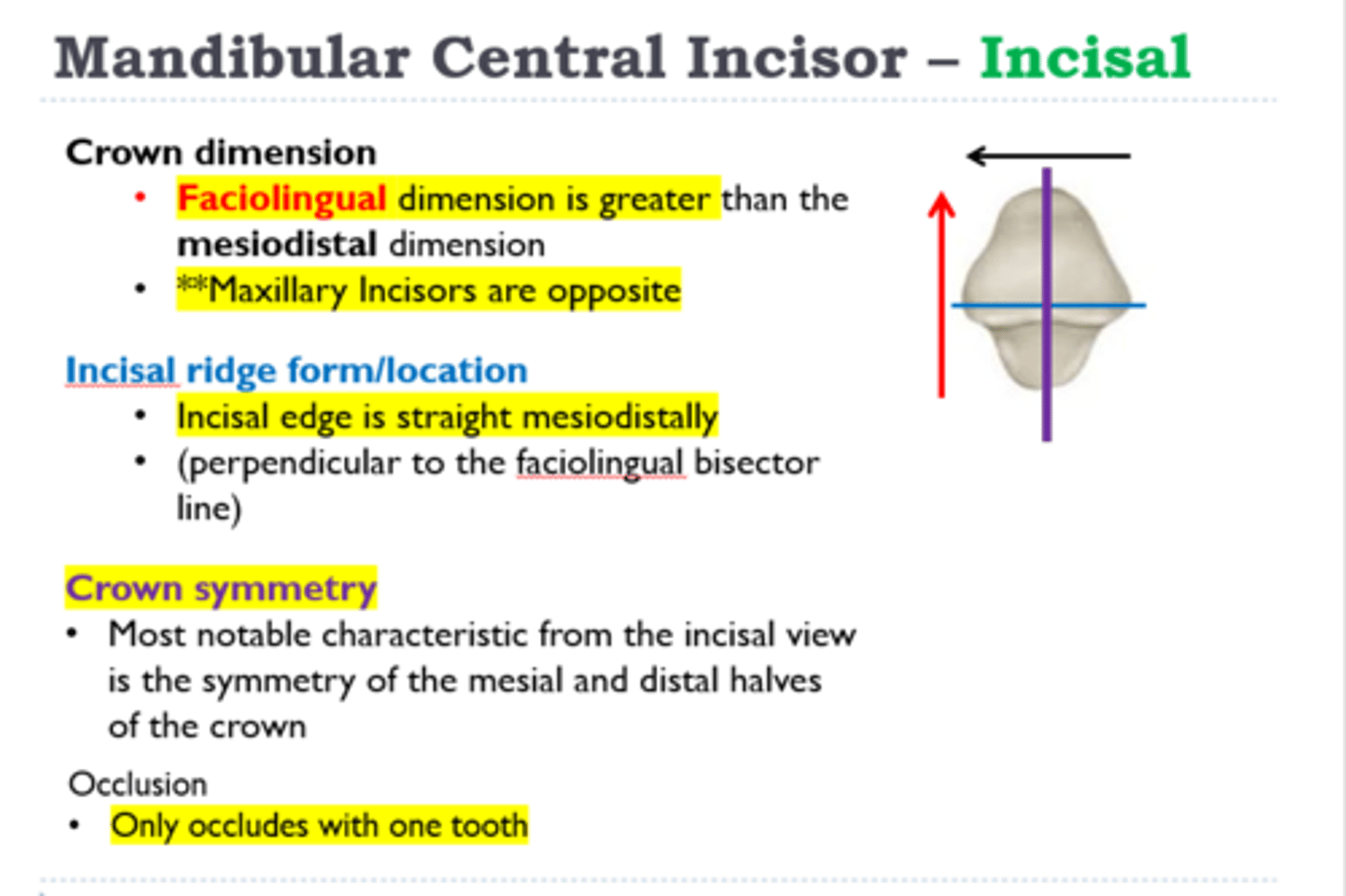
Describe the incisal ridge's form and location on tooth #24 from the incisal view.
Incisal edge is straight mesiodistally (also true for #25)
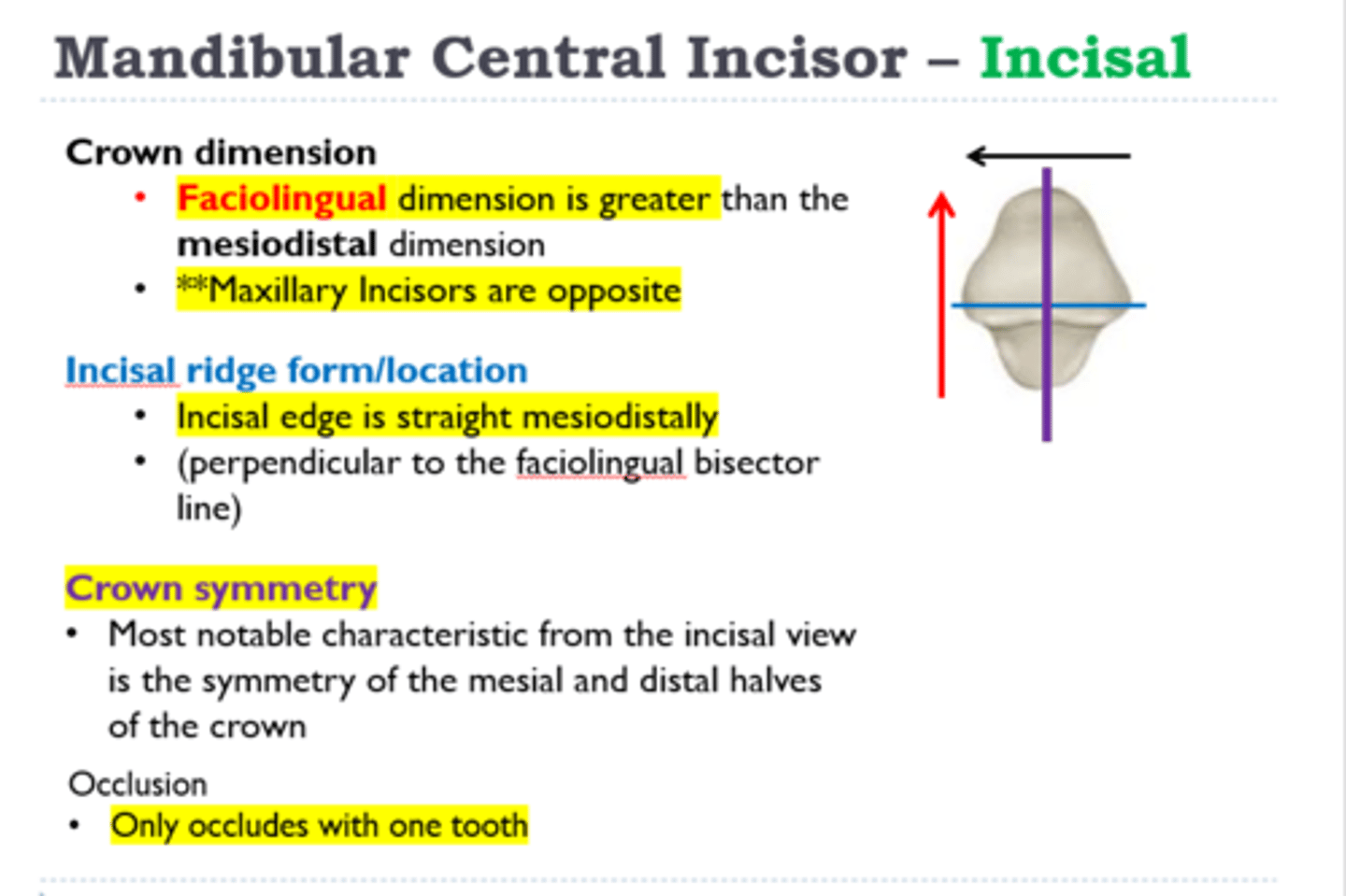
Most notable characteristic of the mandibular central incisor from the incisal view.
crown symmetry of the mesial and distal halves
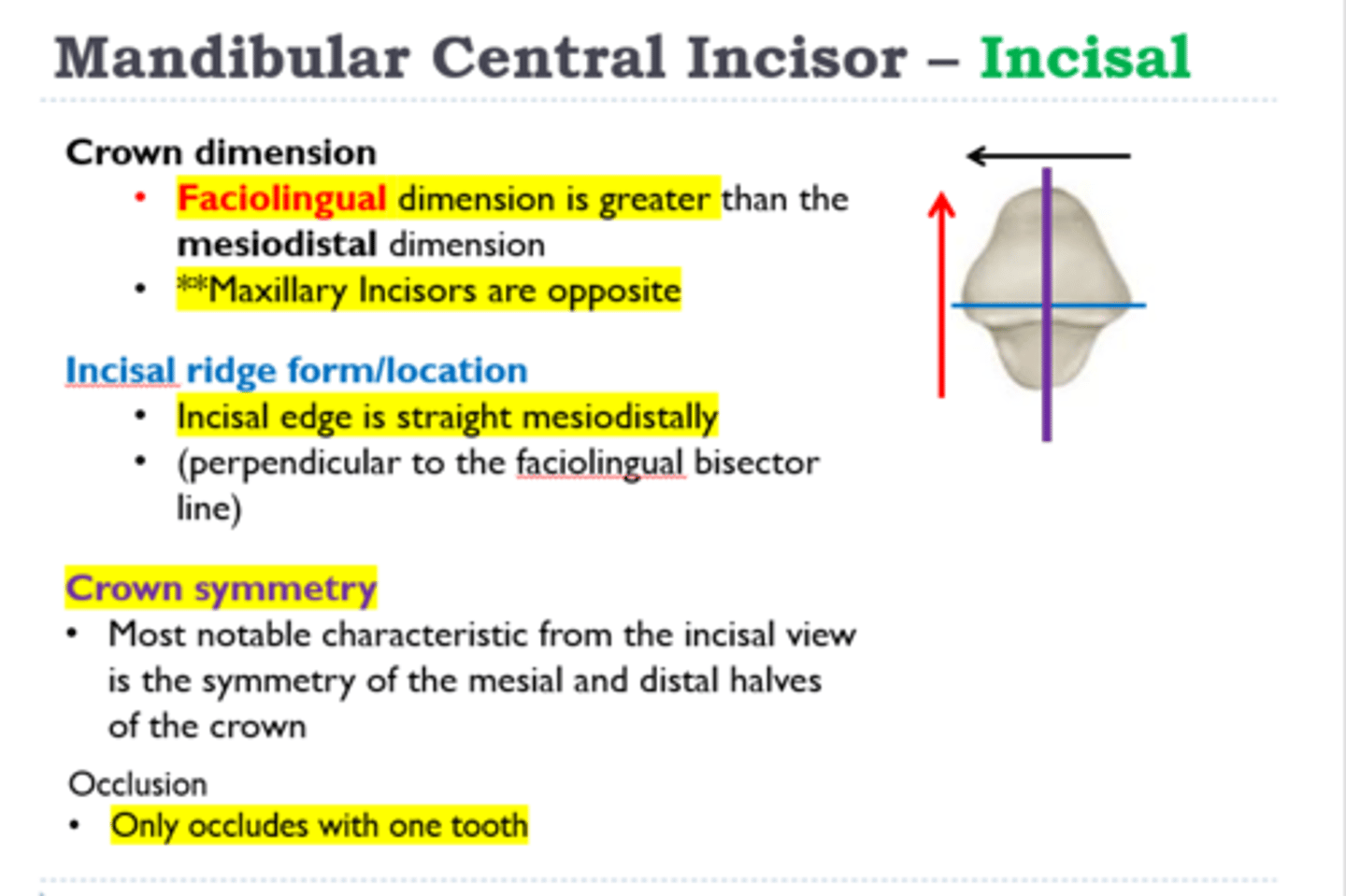
How many teeth do the mandibular central incisors occlude with?
1 tooth
(occlusion = the way your upper and lower teeth fit together)
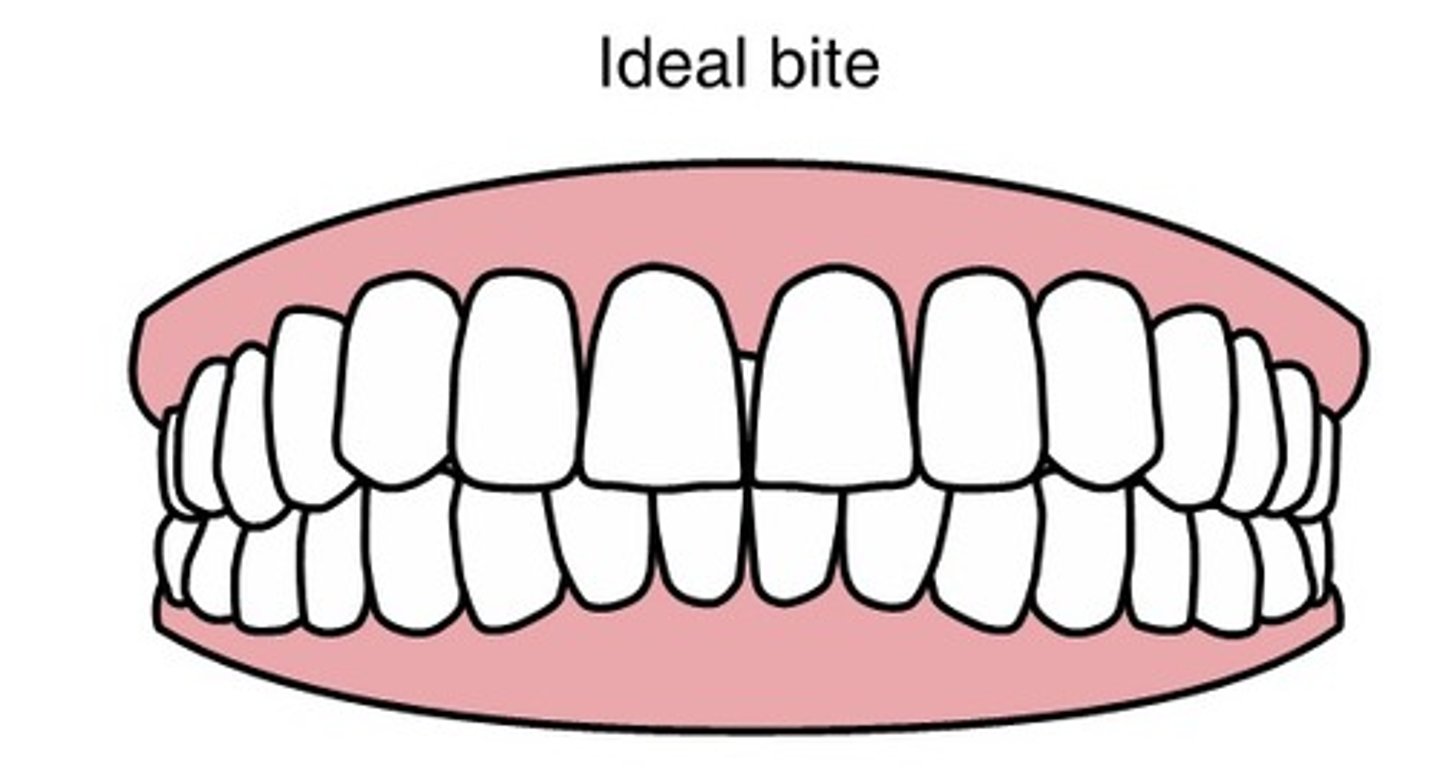
From the facial view, how do the crown dimensions on tooth #26 differ from tooth #25?
#26 has a WIDER crown
Describe the incisal angles of the mandible lateral incisor from the facial view. (2 answers)
-mesioincisal angle is sharp
-distoincisal angle is more rounded
(Think: D = rounded letter, M - sharp letter)
Lingual view: location of the cingulum on tooth #23
distal
(true for both mandibular lateral incisors)
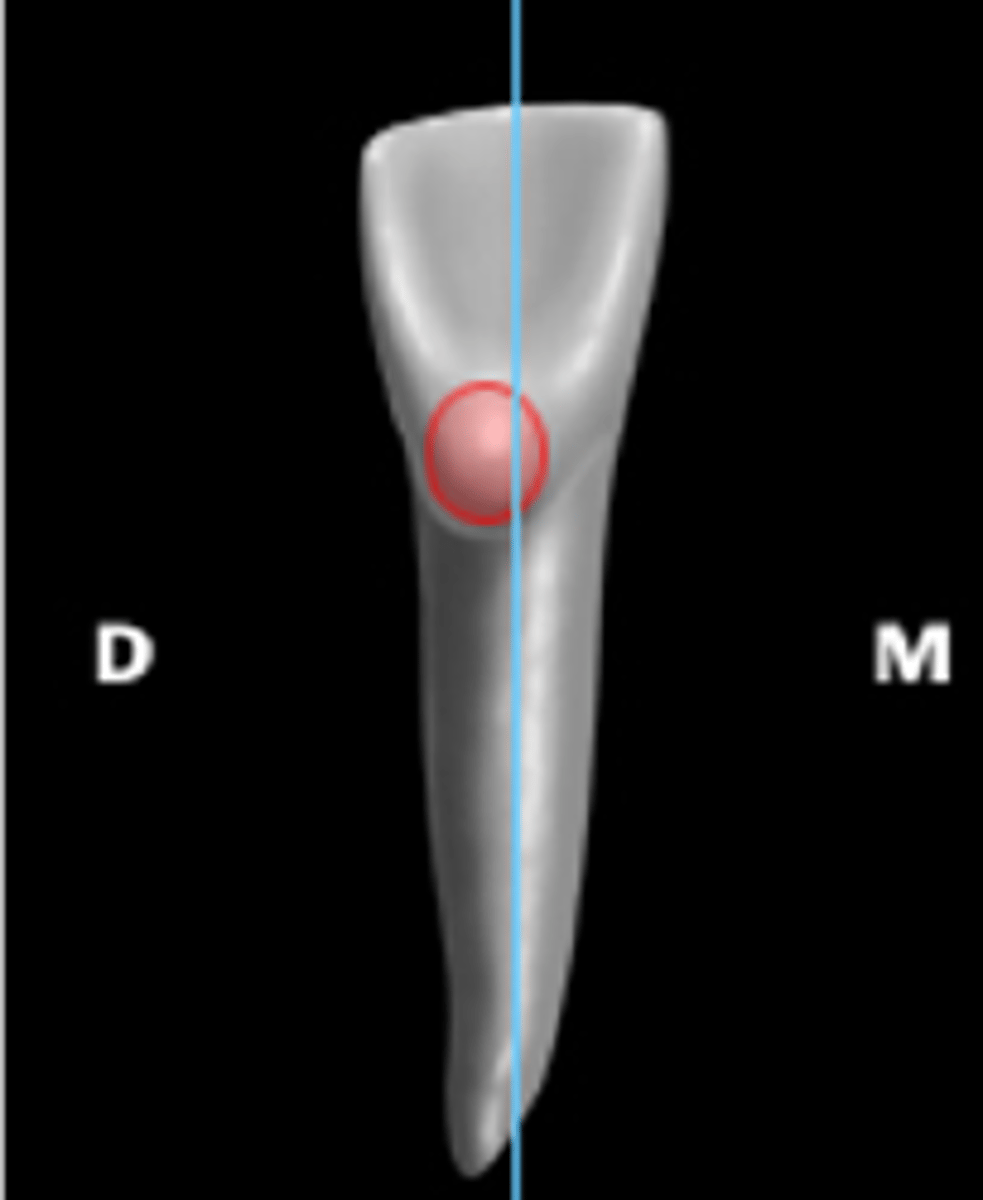
Incisal view: How does the crown appear on the root of tooth #26?
twisted distally
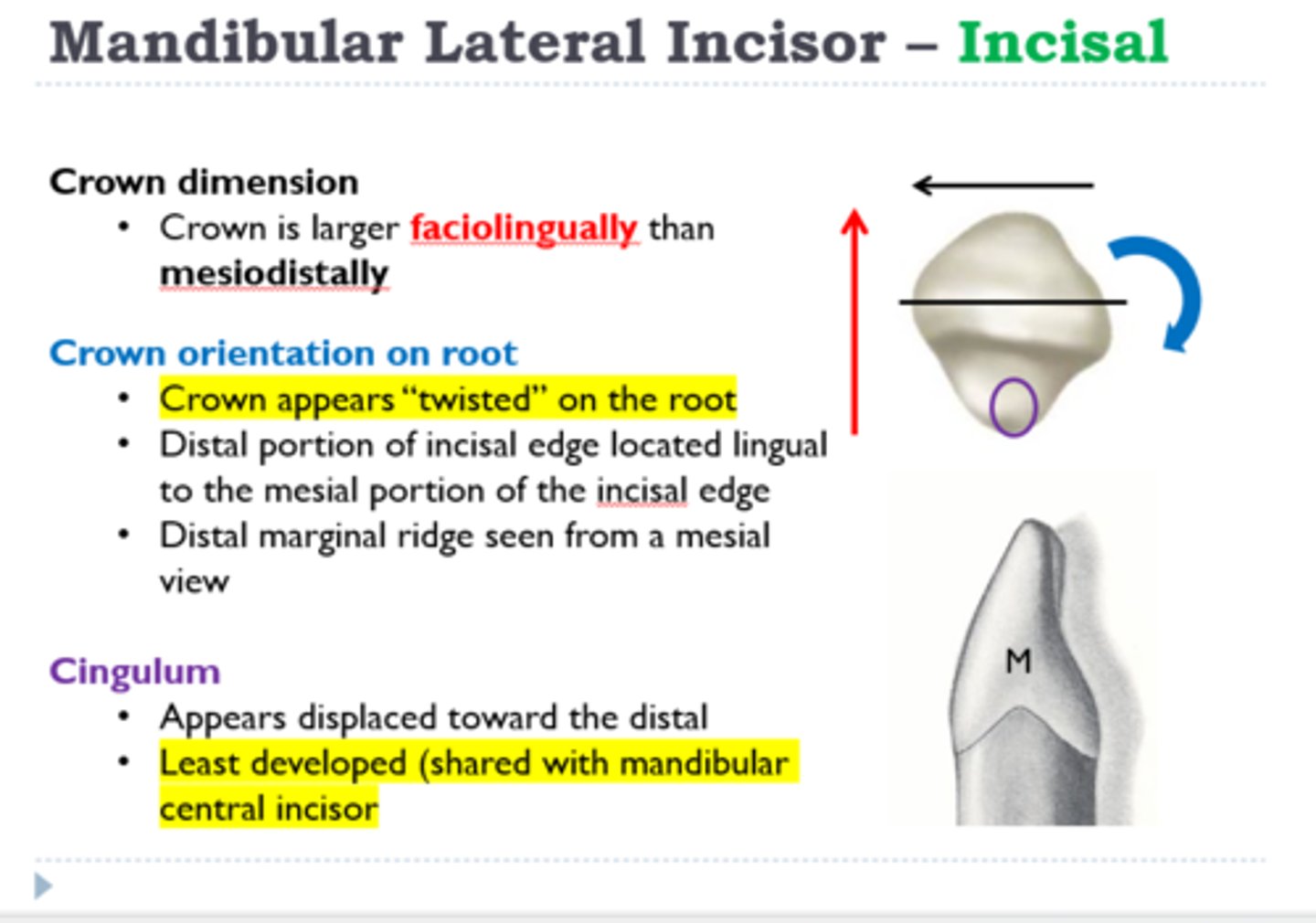
From the incisal aspect, which mandibular incisor has the least developed cingulum?
both
The mandibular___(a.)___ incisor is smaller than the mandibular__(d.)___ incisor.
a. central
b. lateral
The ___(a.)___ incisor is slightly more angular than the __(b.)___ incisor.
a. central
b. lateral
Which mandibular incisor is more likely to have 2 pulp canals?
lateral
The incisal edge is straight on the mandibular ___(a.)___, while the incisal edge exhibits a twist to the distal on the mandibular___(b.)___ incisor.
a. central
b. lateral
Incisal view: which mandibular incisor exhibits bilateral symmetry?
central
(lateral twists on the root base)
Crest of the cingulum on both mandibular incisors are offset to the ______.
distal
The contact areas of both mandibular incisors is located:
incisal third
Maxillary and Mandibular anterior teeth from the PROXIMAL aspect are:
triangular
The crown of a mandibular lateral incisor, compared to the crown of a mandibular central incisor in the same mouth, is best described as:
a. More symmetrical
b. Generally larger in all dimensions
c. Having more distinct lingual anatomy
d. Having a better developed labial ridge
b. Generally larger in all dimensions
When looking from the incisal, which of the following teeth has a faciolingual dimension that is greater than the mesiodistal dimension? (Select all that apply.)
a. #9
b. #10
c. #24
d. #26
c. #24
d. #26
The mandibular central incisor occludes with how many teeth in an ideal occlusion.
1
Which of the following traits would be useful for distinguishing the mandibular lateral incisors from the central incisors? (Select all that apply.)
a. The lateral incisor is wider faciolingually than mesiodistally
b. The central incisors crown is triangular in shape when viewed from the proximal
c. The central incisor's incisal edge is straight & is close to right angles to the long axis of the tooth
d. Lateral incisor crown appears "twisted" on the root
c. The central incisor's incisal edge is straight & is close to right angles to the long axis of the tooth
d. Lateral incisor crown appears "twisted" on the root
A natural opening at the tip of a tooth's root, also known as the apex, is called:
Apical foramen
